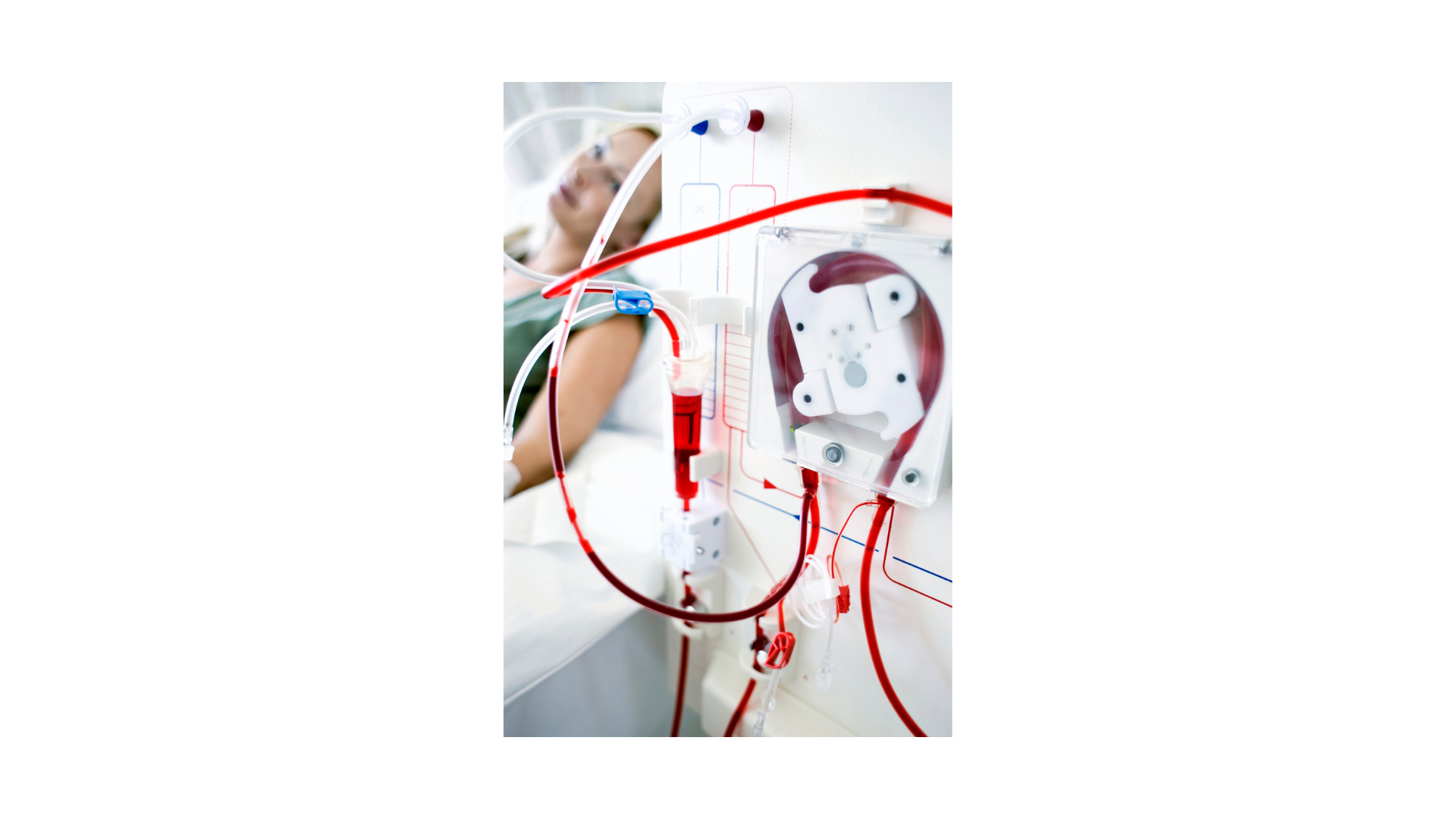
Common Dialysis Terms
Dialysis Access
Dialysis Access is the “avenue’” used to clean or filter the toxins and waste from the body when the kidneys are no longer functioning properly.
Dialysis Access Types
Peritoneal Dialysis Access
A Peritoneal catheter is a silicone tube. The tip of the catheter can be straight or coiled and typically resides in the lower abdomen within the peritoneal cavity. The catheter is typically placed by a surgeon or interventionist using image-guided techniques.
Hemodialysis Access Types
AV (ArterioVenous) Fistula - A fistula is created by a surgeon during an operation to create a connection between an artery (A) and vein (V). The end result of the surgery is to increase blood flow through the vein causing it to enlarge and making it more suitable for hemodialysis needles.
Graft - A graft typically joins one thing to another surgically. In hemodialysis, a graft is a piece of man-made vessel that is used to create a vascular access. One end of the graft is connected to the patient’s artery the other to the vein.
Hemodialysis Catheter (Central Venous Catheter) - A plastic tube used to transport the patient’s blood to and from a dialysis machine for filtration.
Kidney (Renal) Failure
A condition where the kidneys are less able to perform their normal function. It can be acute (short-term or rapid onset) or chronic (long-term).
Chronic or Advanced kidney failure is long-term and often called End-Stage Renal Disease (ESRD).
Acute kidney failure is a sudden onset most often caused by an illness, injury, or toxin that stresses the kidneys. Some patients who survive acute kidney failure can recover kidney function. Others may go on to develop chronic kidney failure.
Dialysis Clearance
The rate at which blood waste products are removed through dialysis. This is expressed in milliliters per minute.
Dialysis Modality
Dialysis Modality is a “type” of dialysis or therapy that is used to filter the blood. Generally, these “dialysis modalities” include Hemodialysis and Peritoneal Dialysis. The location where the dialysis can also be described as part of the modality for example, “Home Hemodialysis” or “In-Center Hemodialysis.”
Dialysate
The cleansing solution that is used in the dialyzer or in the peritoneum to remove excess fluid and toxins from the blood.
Dialyzer
Machine used in hemodialysis that acts as an artificial kidney to remove fluid and toxins from the blood.
Exchange
The process of peritoneal dialysis consisting of the fill, the dwell, and the drain. First the abdomen is filled with fluid (dialysate), the abdomen retains the fluid for a period of time, and then the abdomen is drained of fluid. The complete process is called an exchange.
Glomerular Filtration Rate (GFR)
GFR is a measurement that determines the health of a kidney. It is measured as a percentage, the estimated GFR is the amount of kidney functionality that remains. A GFR of 15% or less usually means that a person requires dialysis or transplantation to continue living.
Kidney Transplant
A kidney transplant involves surgically placing a healthy kidney from a living or deceased donor into the body. Those who receive a transplanted kidney will need to take medications for the remainder of their lives to keep their body from rejecting the new organ.
Peritoneal Dialysis Cycler
Machine used in peritoneal dialysis to mechanically perform CCPD exchanges overnight.
Peritoneal Cavity
The space in the abdomen that, in peritoneal dialysis, contains the dialysate and removes unhealthy toxins and fluids from the blood.
Peritoneal Membrane
The lining of the abdominal cavity resembling cellophane with tiny holes that is used to sift out excess fluids and toxins during an exchange.
Two Types of Peritoneal Dialysis
Continuous Ambulatory Peritoneal Dialysis (CAPD)
CAPD is a continuous form of PD in which a person performs the exchanges of dialysis fluid by hand. The fluid is usually exchanged four times during the day and is left inside the person’s body overnight. With CAPD, manual exchanges are done four or five times each day. The exchanges can be done at home or work while the patient goes about the day. Each exchange takes about 30 minutes.
Automated Peritoneal Dialysis (APD)
APD is a form of PD that uses a machine (dialysis cycler) to fill and drain the dialysis fluid (dialysate) into the abdominal cavity. It is usually done overnight while the person sleeps. There are many brands of dialysis cyclers, each brand has its own features.






